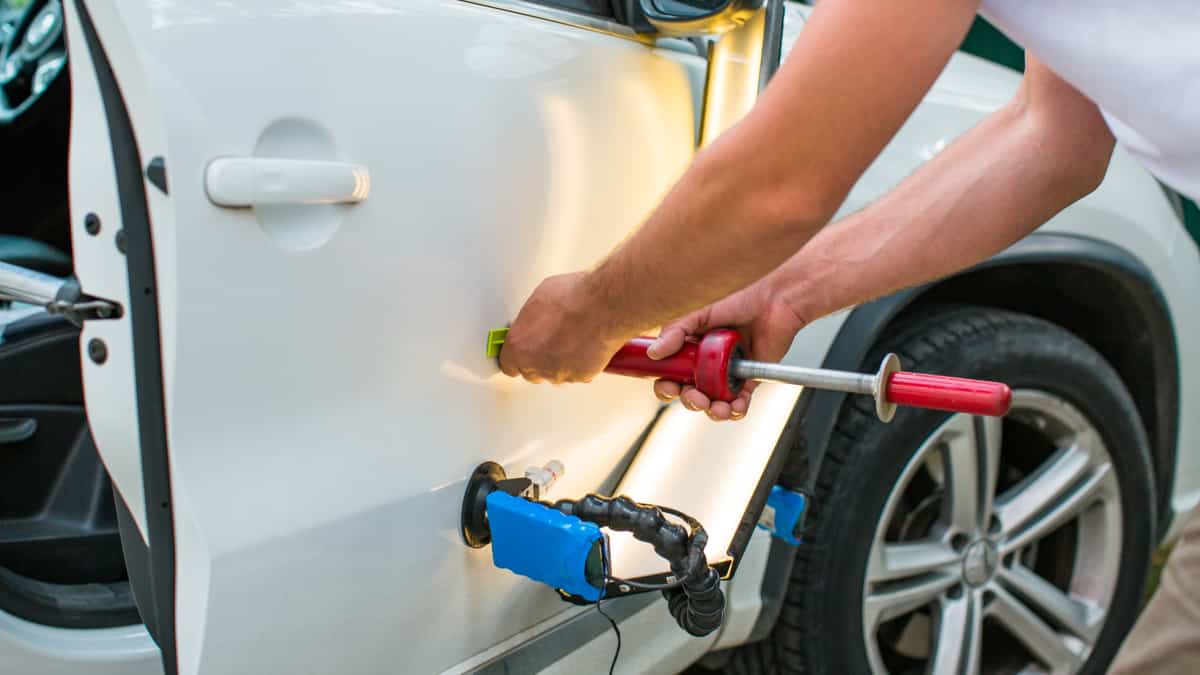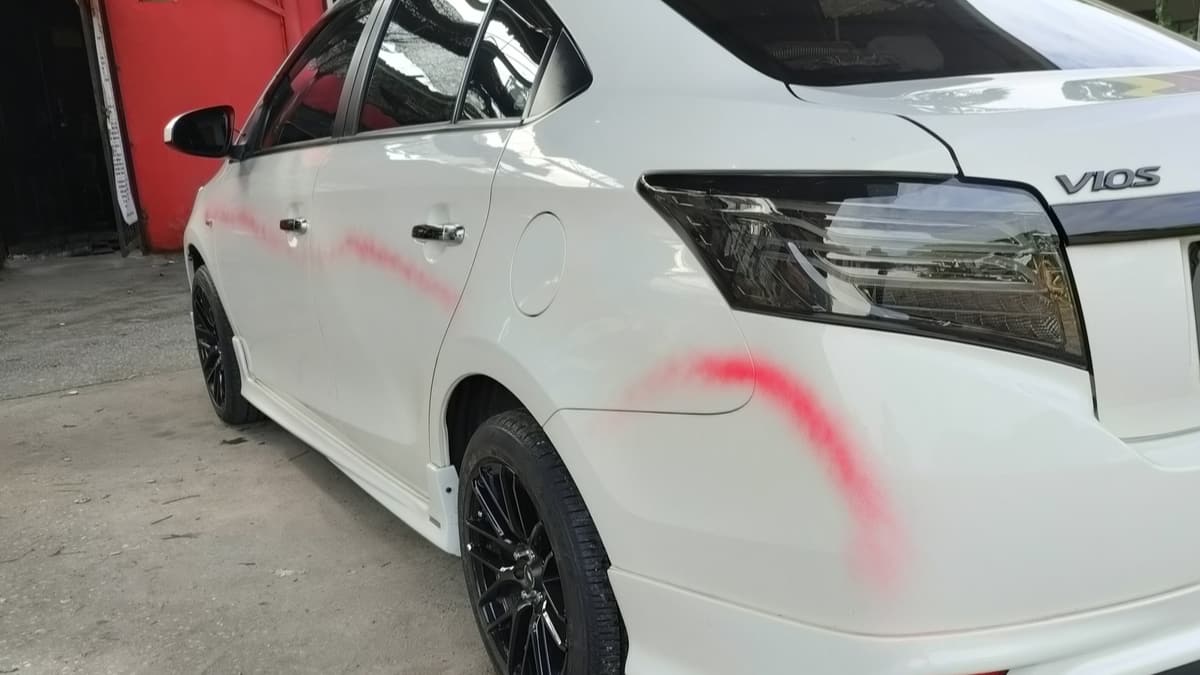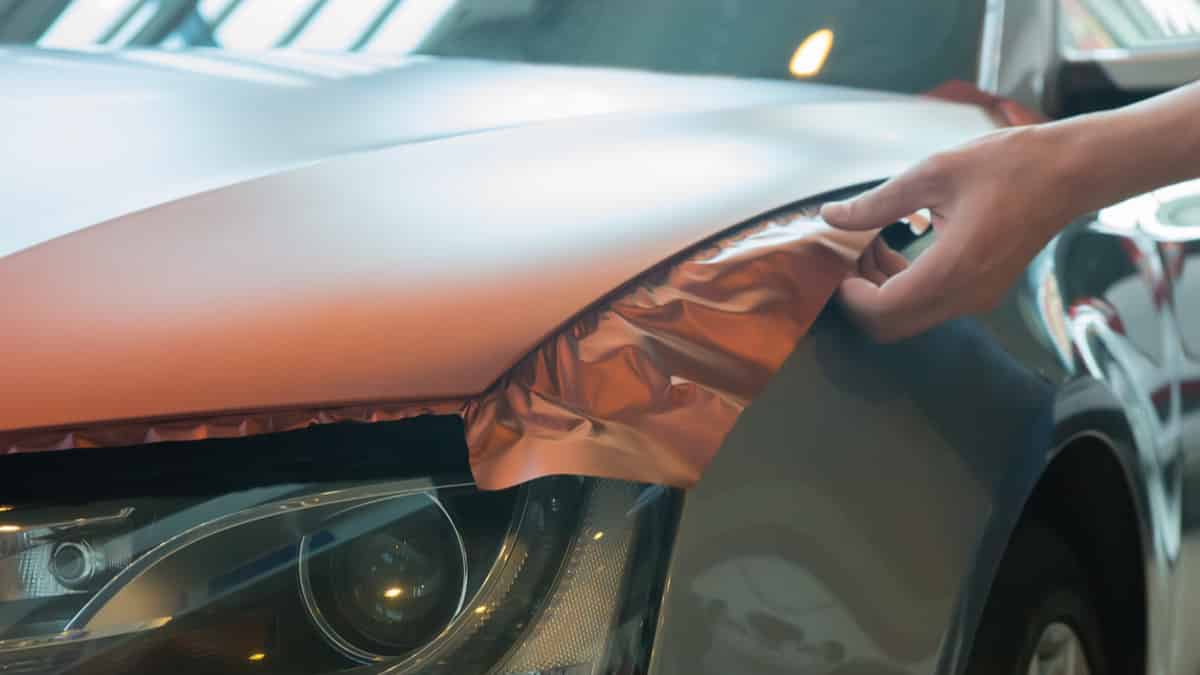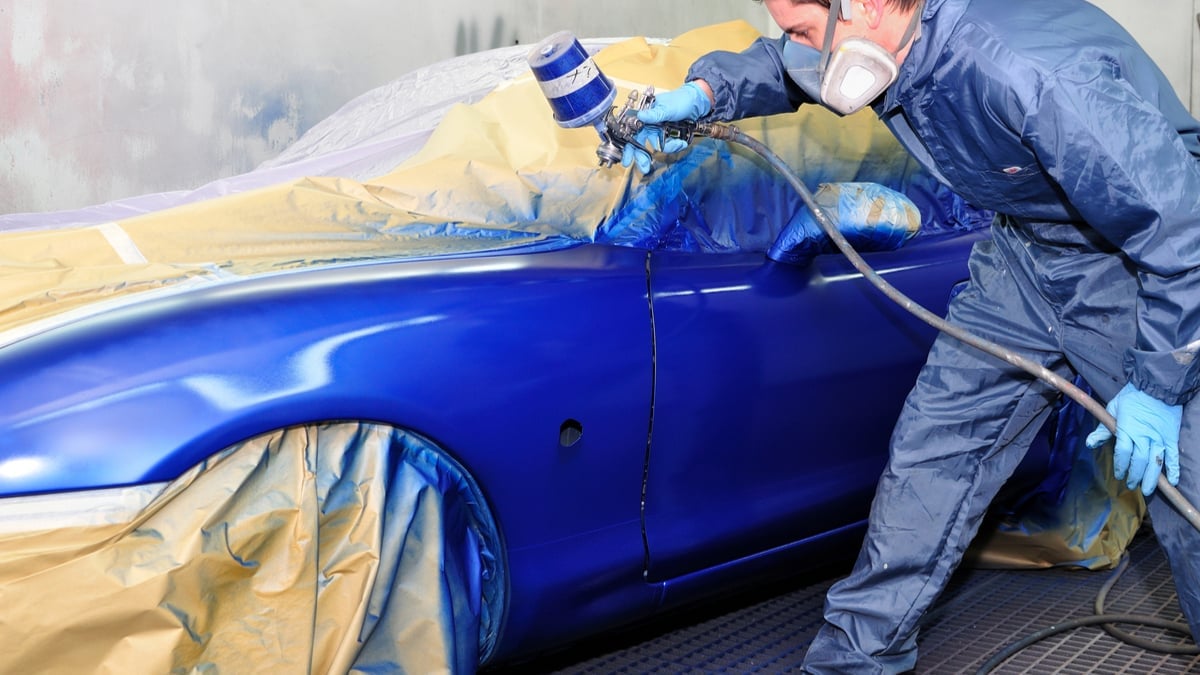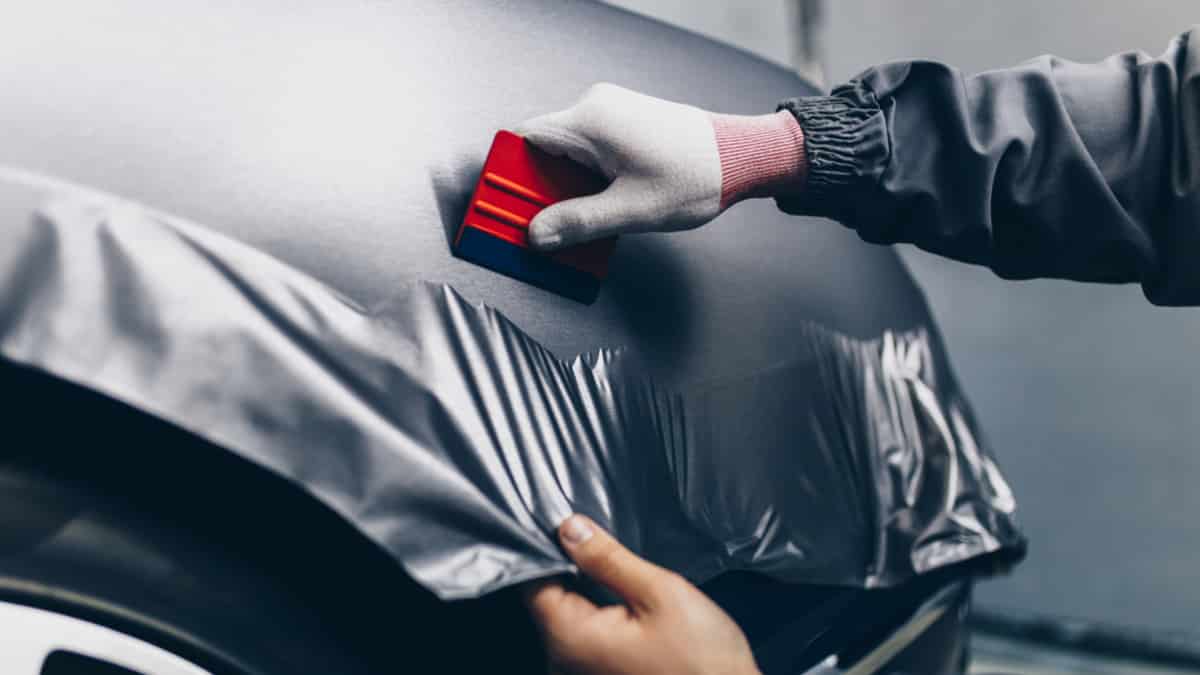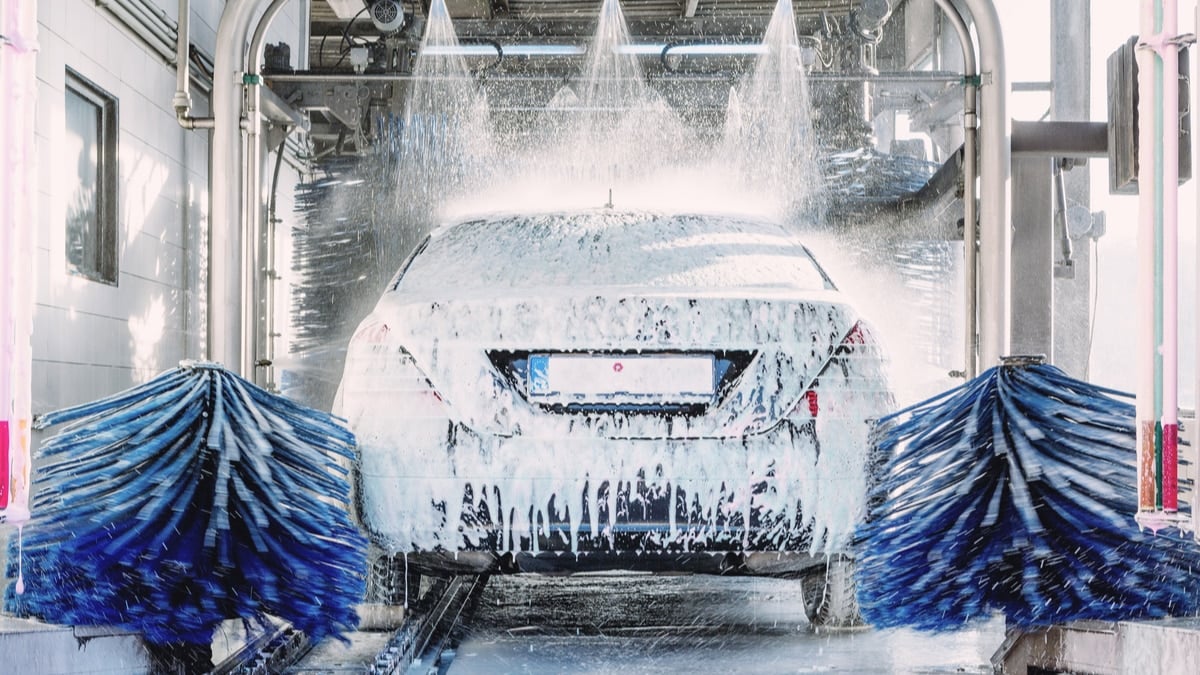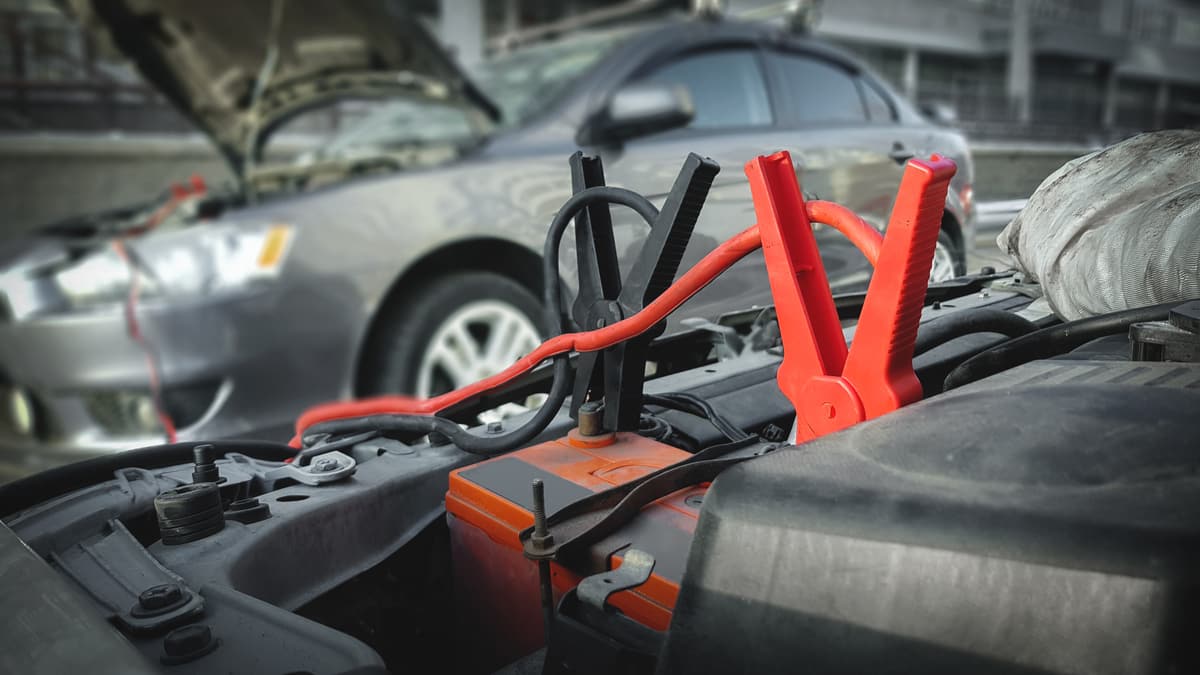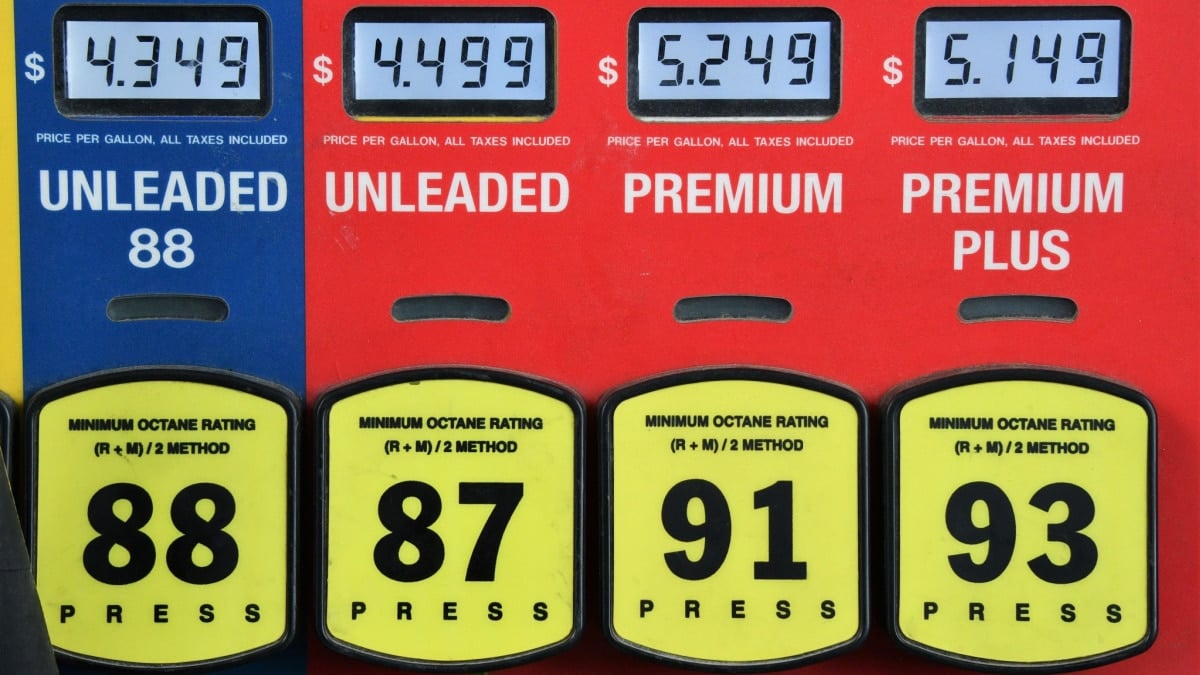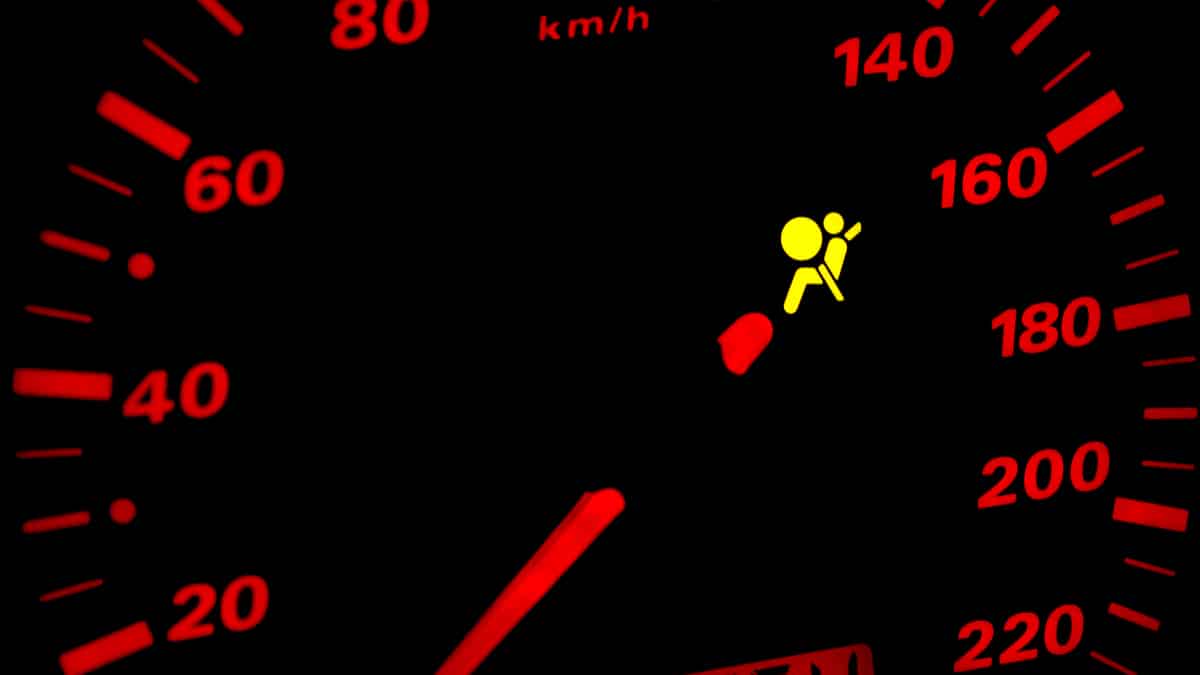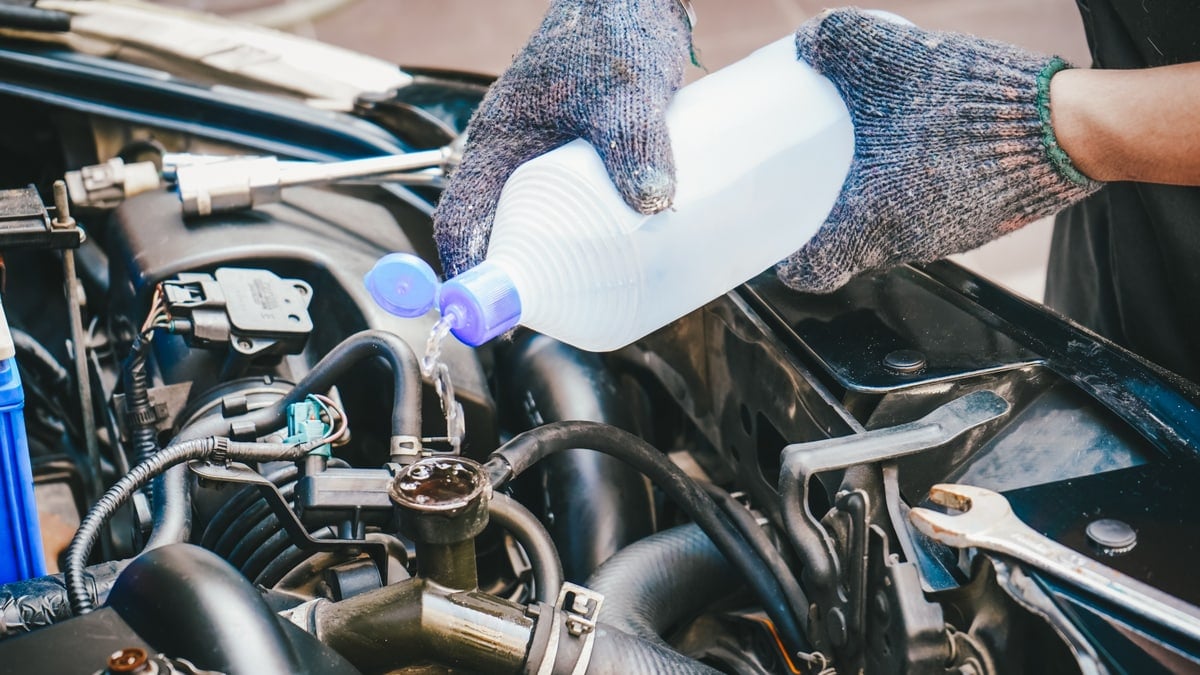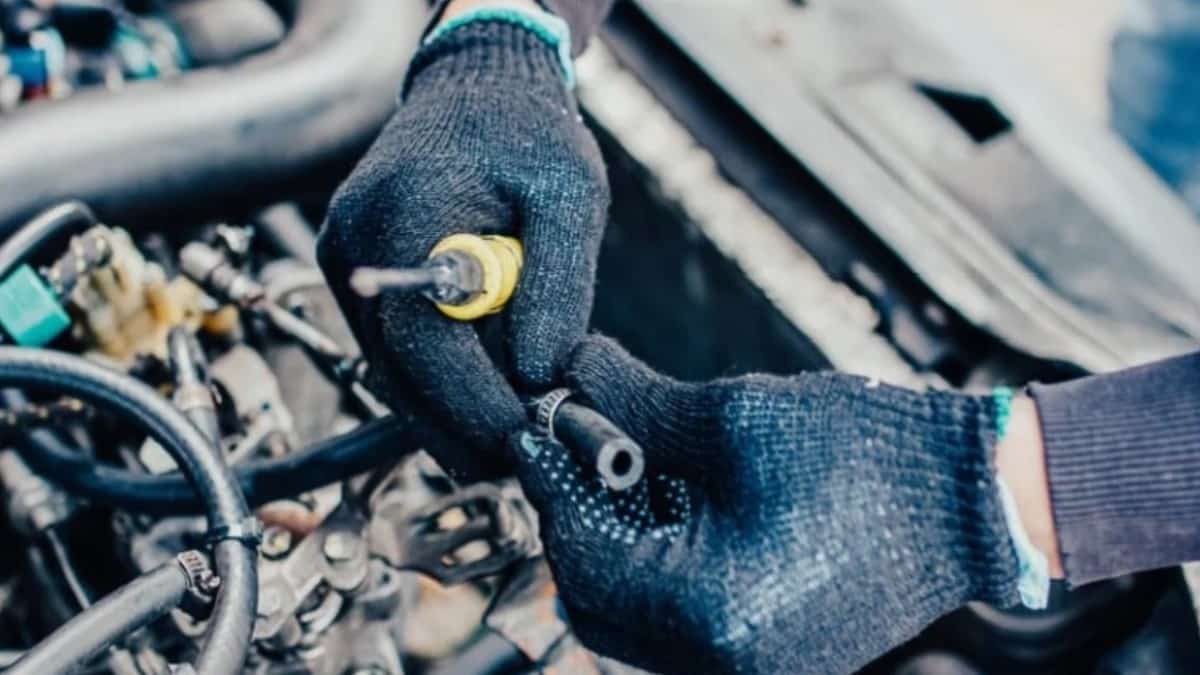When you work in the automotive field, as we do, you are used to seeing a variety of things stuck to car paint that need to come off. Probably the most prevalent continues to be bumper stickers. You’ll find many people online telling you to apply Goo Gone for problems such as these. But is Goo Gone safe for car paint?
In this guide, we look at the safety of Goo Gone for automotive paint. This article also tells you exactly what Goo Gone is, so you understand the product better. We will tell you how to use it and discuss its purpose on car windows. Finally, we answer your top Goo Gone questions once and for all.
Is Goo Gone Safe On Car Paint?
Goo Gone automotive spray is designed for use on your car. Therefore, you don’t have to worry about getting it on the car paint as long as you follow the directions carefully. In fact, this popular adhesive remover is great for use with automotive applications and will become one of your favorite products.
If you accidentally get Goo Gone on the car paint where it doesn’t belong, you don’t need to stress out. You can wipe it off with a clean microfiber cloth so it doesn’t cause any damage. Once the majority of it has been removed, take a warm soapy cloth and finish cleaning the area.
To take it a step further, you could also wash and wax the car, but it’s not necessary. This step only helps your vehicle look its best, which ensures heads turn.
What Is Goo Gone?
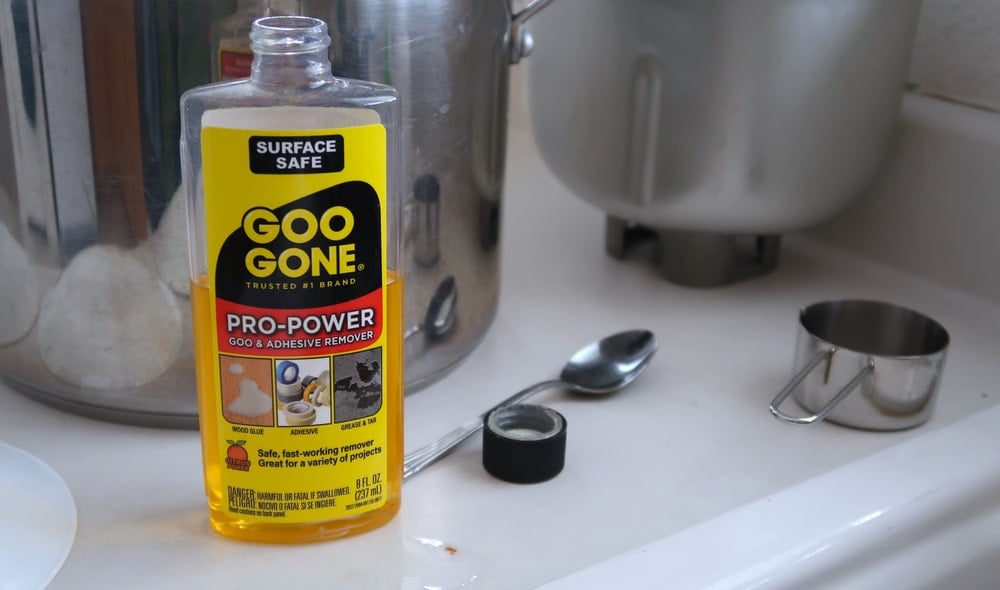
Goo Gone is an adhesive remover designed to get off tough substances from a variety of surfaces. It’s part of the PurposeBuilt Brands, which is also the parent to Weiman, Biokleen, Five Star Chemicals, Stone Care International and Magic. Goo Gone is headquartered in Illinois.
The main ingredients in Goo Gone adhesive removers include petroleum distillates (hydrocarbon) and solvents. It also includes limonene (hydrocarbon), along with the distinct smell of sweet orange extract.
How to Properly Use Goo Gone on Car Paint
If you plan to spray Goo Gone on your vehicle, it’s important to follow all of the recommended instructions. Start by reading the bottle to see what the manufacturer says. You can also follow these steps.
1. Apply Goo Gone to the Car Surface
Use the appropriate Goo Gone automotive product for your need. Spray the Goo Gone Gel on the part of your car that needs to be cleaned. Do not use a variation that’s not designed for automotive use, such as the Latex Paint Clean-up Spray product.
Before you spray the Goo Gone over a large surface, it’s best to test it on a small patch first. Pick a place that’s not noticeable and spray it on the paint to ensure there’s no strange reaction.
2. Leave Goo Gone Sit
Allow the Goo Gone to sit on the car paint for a couple of minutes. It can take some time before the residue starts to dissolve.
If you’re facing a bumper sticker or decal that spent a lot of time on the vehicle, it’s normal to need a little more time. It’s okay to let the automotive solvent sit on the car paint for five to ten minutes.
3. Wipe Off the Goo Gone
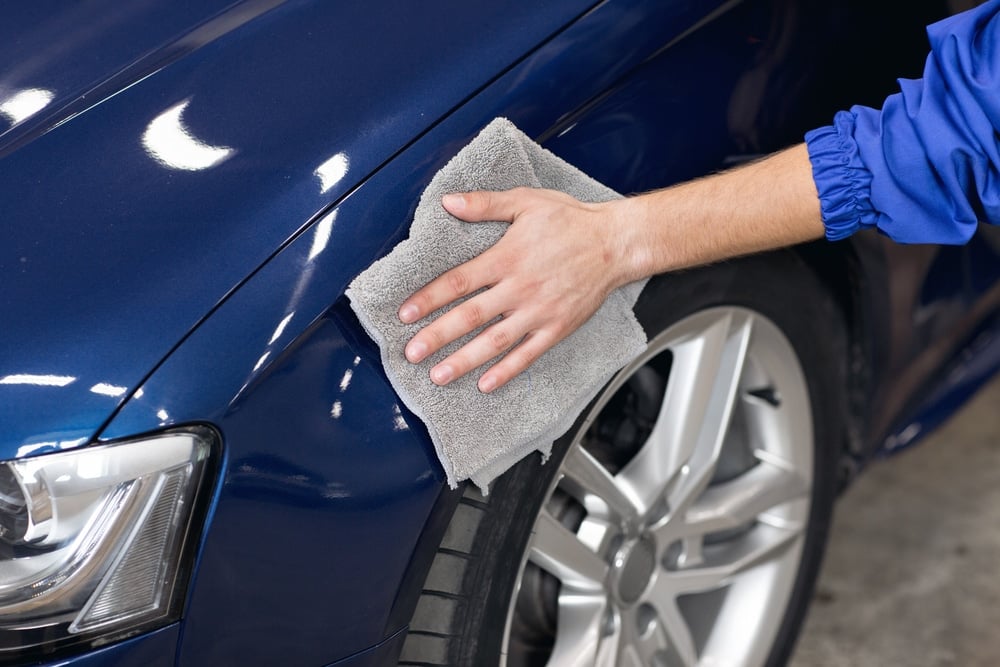
Once the Goo Gone has sat for as long as you want, you can wipe it off. Use a clean rag to wipe off the noticeable solvent. Wipe away as much of the residue as possible.
If the sticky residue hasn’t budged, you may need to reapply it. You can repeat the above steps to see if you make any further progress.
4. Wash the Paint
Mix some car wash solution in water in your bucket. Some people say to use traditional dish soap, but we prefer sticking to high-quality car wash products because dish soap is harsh. If your car has a tough residue to be removed, feel free to add more soap than normal.
With your car wash mitt, scrub the car’s surface to make it shine. The remainder of the residue and the Goo Gone should come off in the process. Your circular motions will have the best effect.
5. Rinse Off the Car
With all of the Goo Gone off of the car, you are ready to clean away the car wash soap. Use a water hose or a pressure washer on a low setting.
You should supply a clean stream of water until all of the soap is removed. Don’t allow any of the soap to sit on the car’s surface or you could damage the paint.
6. Dry the Car
After you clean a car, you want to dry it. We like to use a microfiber cloth to dry the surface.
Drying the car helps you avoid water spots. It also prevents streak marks and stains from occurring, ensuring your car looks as good as possible.
Is Goo Gone Safe On Car Windows?
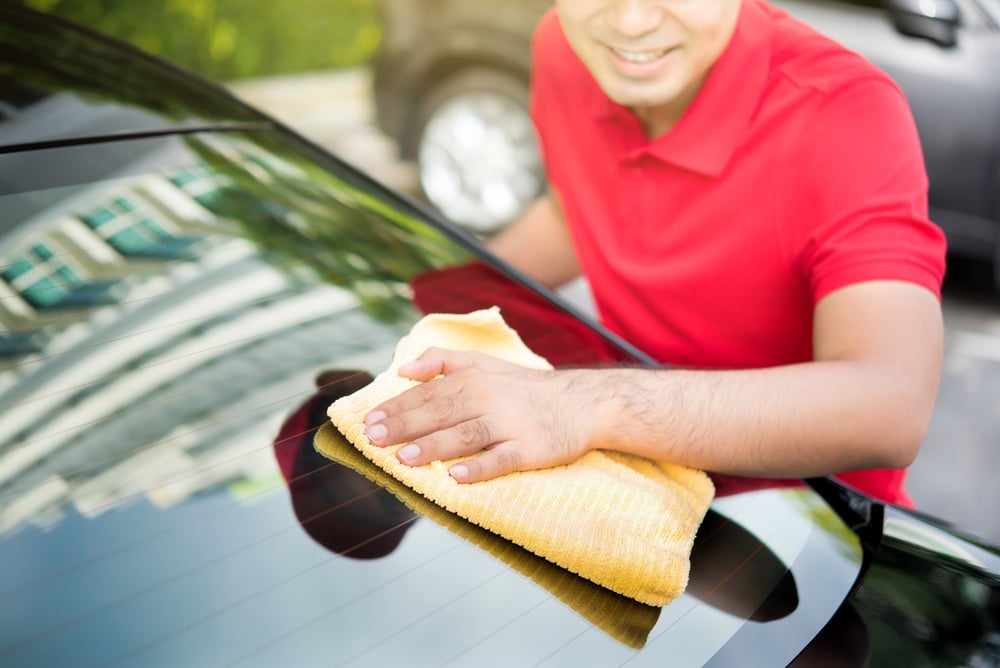
Goo Gone is also rated to work on auto glass without a problem. It’s great at removing stickers and another residue from the glass, but you need to use some precautions.
The Goo Gone automotive products shouldn’t be used on these surfaces:
- Rubber trim
- Leather
- Faux stainless steel
If the auto glass is close to these surfaces, you want to use extra caution to prevent overspray or drips. Otherwise, you might end up dealing with car damage that wasn’t expected.
However, Goo Gone does a remarkable job of cleaning windows. You may even choose to use it during a car wash and detailing job in the future.
What should you not use Goo Gone on?
Goo Gone for automotive applications works great on car paint and auto glass. However, it’s not designed to be used on leather surfaces, faux stainless steel or rubber. Using Goo Gone on these surfaces can lead to damage, so you need to be careful where you spray it.
How long do I leave Goo Gone on the car?
For minor residue messes, you may only need to leave the Goo Gone on the car for a couple of minutes. You can try to remove it with a clean rag to see if the residue comes off. If not, you can leave Goo Gone sitting on the surface for up to ten minutes, but this should only be done when absolutely necessary.
Is Goo Gone just oil?
Goo Gone is not just an oil. The main ingredients include petroleum distillates (hydrocarbon), solvents, limonene (hydrocarbon) and sweet orange extract to give it the distinctive smell you are used to. Take precautions when using Goo Gone because it can irritate your skin.
Will Goo Gone damage a car’s finish?
If you use the Goo Gone formula for automotive applications, the car finish should be fine. This spray gel is designed to be used on car paint and it can sit on the surface for up to ten minutes. Once the residue has been removed and you clean the surface, the car will look great, thereby increasing its value.
How do you get Goo Gone residue off a car?
Once you spray Goo Gone on the car, you want the residue to come off with it. Take a clean rag and wipe the area down to see if the residue comes off. After that, wash the area with soap and water. After you rinse the surface down to remove the soap, you want to dry the paint to ensure it looks its best.
Goo Gone is an amazing substance that professional mechanics, such as ourselves, use often. We find it useful when removing a variety of sticky substances from the car surfaces, such as bumper stickers and decals. You can spray it on car paint and auto glass to give a fresh-looking surface.
It doesn’t get much easier to apply Goo Gone, either. With the spray gel, you can direct the stream right where it’s needed while keeping the substance away from materials that it can harm. Follow all of the instructions listed by the manufacturer for the best results. After a few uses, you’ll find that this spray needs to be with you at all times for jobs you didn’t know you needed to complete.
Categories: Cleaning & Detailing, Paint

